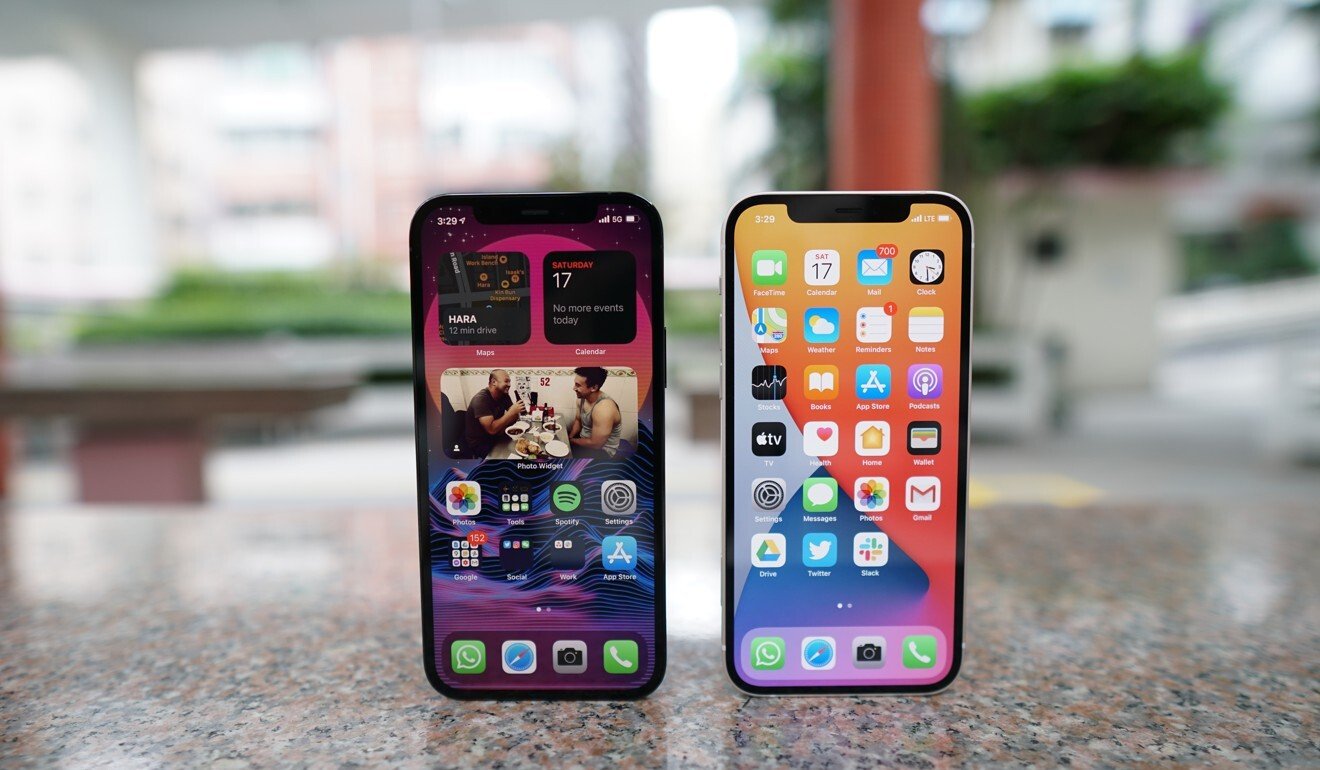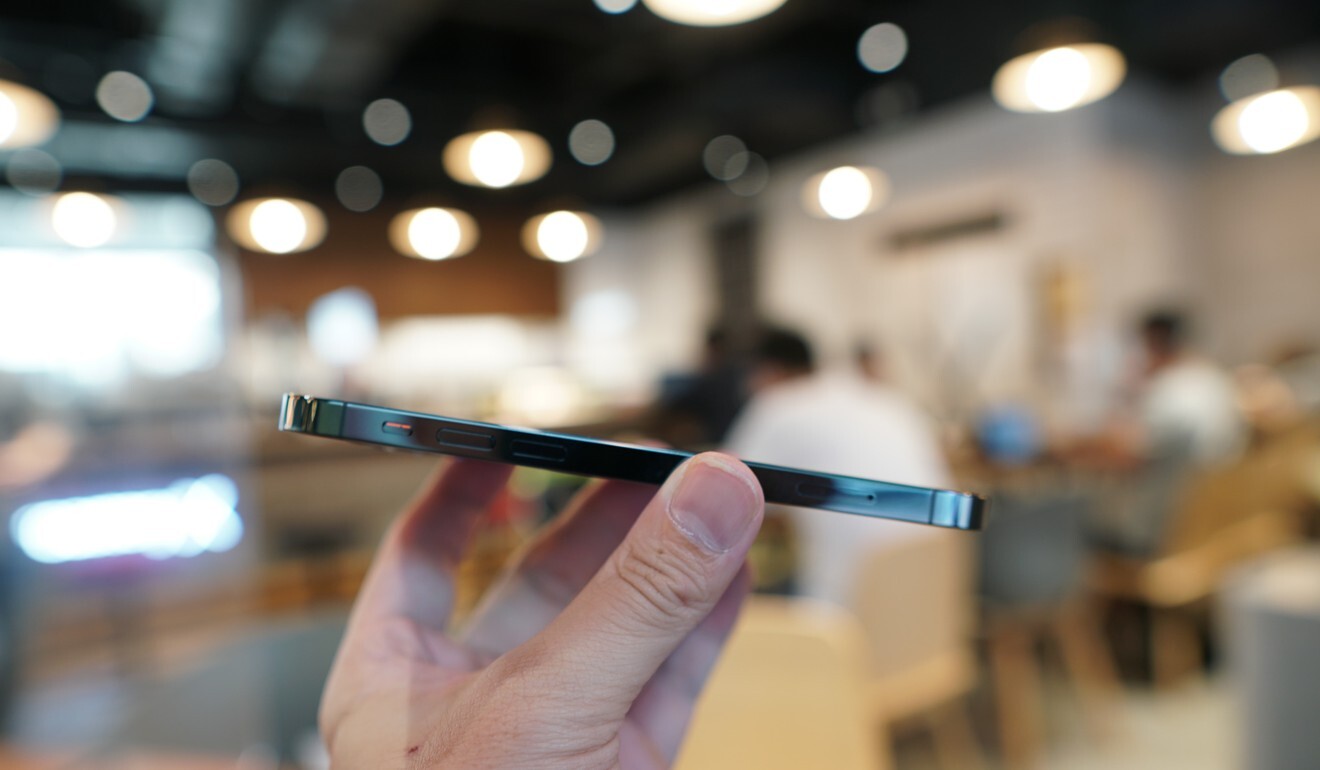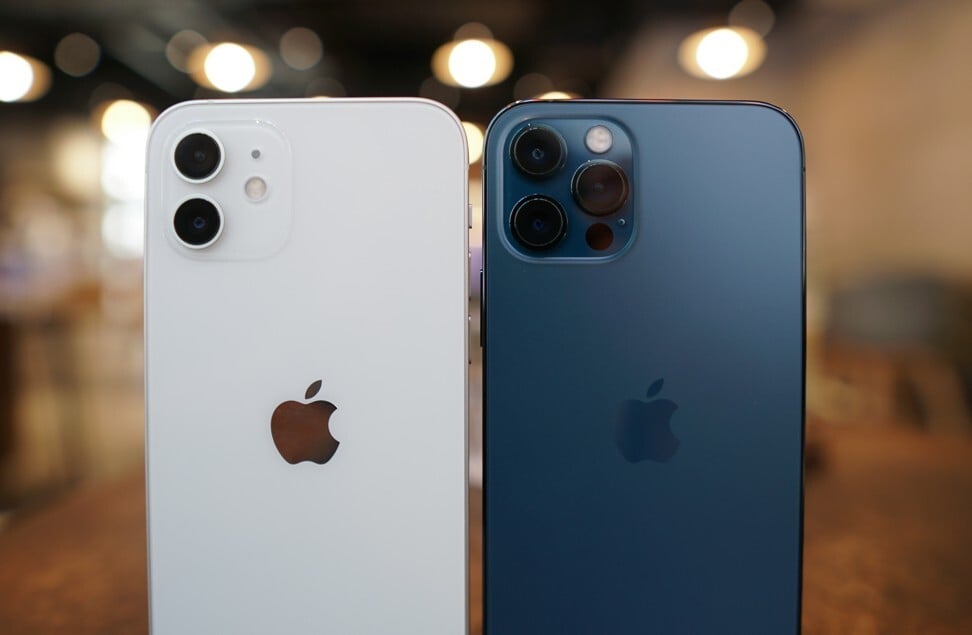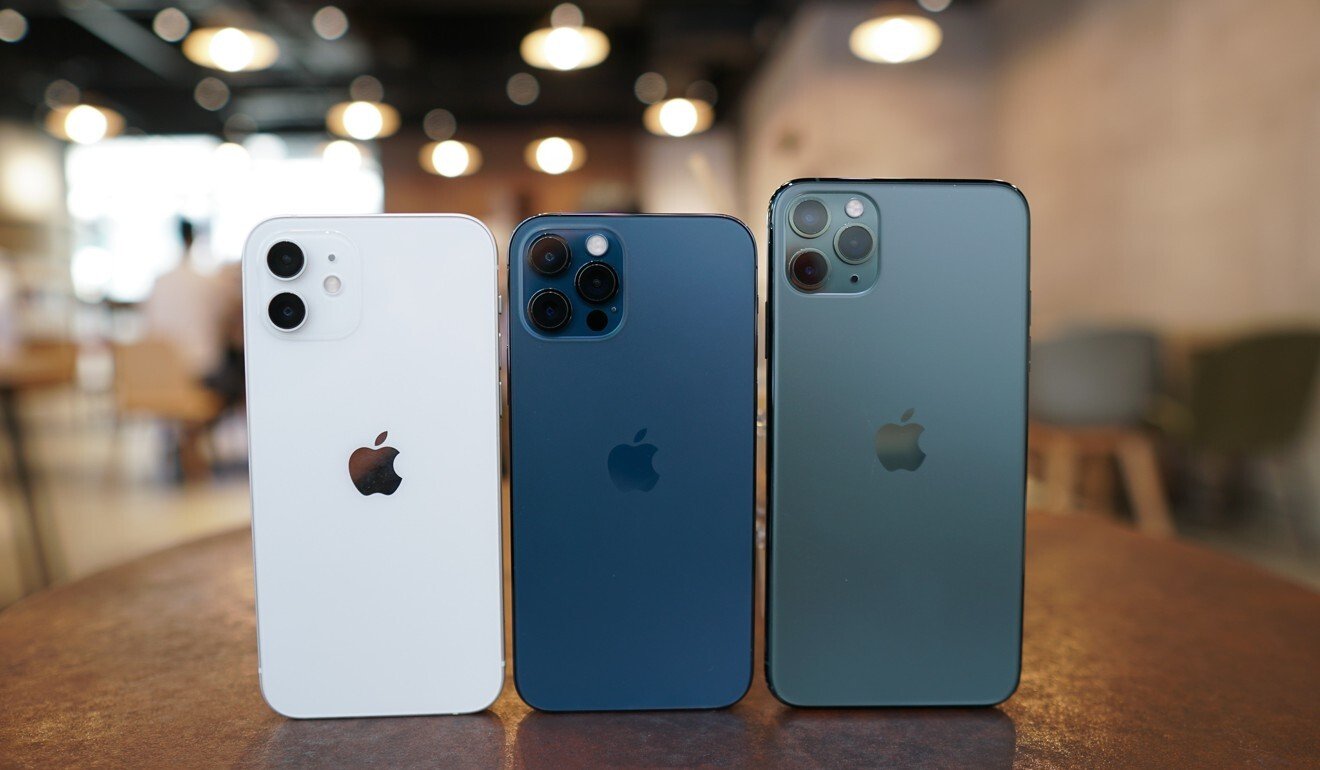
Apple iPhone 12 and 12 Pro first impressions: 5G ready, widgets on home screen, Hollywood-style Dolby Vision processing
- The four handsets in the iPhone 12 series mark Apple’s first iteration of 5G phones, and all run on a 5nm chip, which is smaller, speedier and more efficient
- They look more boxy than previous iPhone models, and the cameras have Hollywood-level processing power
Compared to rival Android brands, Apple has traditionally refused to rely on raw numbers on a specs sheet to market its phones, because to the company, all that mattered was real-world performance.
I’ve spent the past six days testing the iPhone 12 and 12 Pro, two of the four phones in this year’s line-up.
Design and hardware

The most notable change in the new iPhones is the boxy look. The 12 and 12 Pro are the same size, with the same 6.1-inch OLED screen, and both run on the A14 Bionic chip.
The differences are mostly found in the cameras: the Pro has a telephoto zoom camera and a Lidar (light detection and ranging) sensor in addition to the 12-megapixel main and ultra-wide-angle cameras, whereas the standard iPhone 12 only has the latter two.

The screens on both phones have ceramic infused into the glass panel, which Apple says makes the display four times stronger and less likely to shatter if dropped.
There’s also a new magnetic plate on the back of the iPhone that supports Apple’s new MagSafe wireless charger, which is essentially a wireless charging pad that can magnetically attach to the back of iPhone for easier use during charging.
Software and features

This year’s iPhones are the first to support 5G, although this isn’t vitally important for consumers yet. In the US and Hong Kong, 5G data speeds are barely faster than 4G, and reception is notoriously hard to find in non-metropolitan parts of the US.
This is where Apple’s support is important: historically, mobile trends do not become mainstream until iPhones jump on board. This was the case with 4G, video calling and wireless charging. Now that iPhones support 5G, this will raise consumer interest, and force telecom companies to build better 5G networks.
Elsewhere, iOS 14 brings several new improvements: users can finally have widgets on the home screen, such as a calendar or a Spotify widget that allows direct music control.

Performance and battery life
Apple’s A series of chips has always been a few steps ahead of rival chips, and this year’s 5nm A14 Bionic is no different in benchmark scores or real world performance.
The most noticeable show of processing power is perhaps the iPhone 12 phones’ ability to shoot in Dolby Vision, a colour grading science used by Hollywood studios.

In essence, it adjusts the metadata for individual scenes dynamically so each scene can be optimised for the best exposure and vivid colours. The 12’s cameras can process all this data in real time. Once filming is finished, users can edit the Dolby Vision clip in the native iOS photo gallery like they would a still photo. This is a level of processing power most computers can’t even pull off, let alone phones.
For still photography, I’d say the iPhone 12s are only a very slight improvement over the 11 series when shooting during the day. Shoot at night, however, and the iPhone 12 shines, due to a larger image sensor for the main camera, and the ability to shoot in night mode with the ultra-wide-angle camera.
Battery life will depend on how hard you’re pushing the phone. I’m a heavy user and I’ve been testing 5G networks in Hong Kong, so for me, both the 12 and 12 Pro don’t quite last a full 14-hour day. For more normal use, it should be fine.

Conclusion
The iPhone 12 and 12 Pro can be considered a huge or small upgrade over last year’s iPhones depending on who you are.
If you’re a casual smartphone user who just needs a handset for surfing the web and chatting with friends, the iPhone 12 models will feel almost unchanged from the 11s. But if you care about the potential huge bump in network speeds or if you shoot a lot of video, the new iPhones will seem like a huge leap.
It helps that Apple, unlike its rivals, did not bump up its prices this year. As weird as it sounds considering we’re in the middle of a pandemic, US$799 (HK$6,799) for the standard iPhone 12 seems like great value.
The 12 Pro costs a bit more at US$999, and while it is better, I think the 12 has more appeal. It’s worth noting there are two more iPhone 12s (a supersized and a petite model) coming next month, so you could always wait and see.

